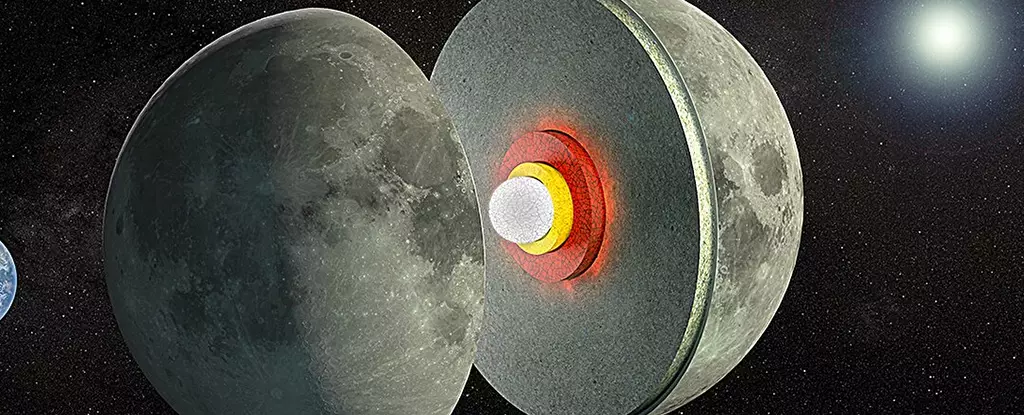Recent findings suggest that the Moon may house a partially-molten layer residing between its rocky mantle and solid core, a proposition gaining traction due to advanced research conducted by NASA’s Goddard Space Flight Center and the University of Arizona. This revelation stems from a detailed analysis of the Moon’s gravitational properties and structural rigidity, exploring its internal dynamics under the gravitational forces exerted by both the Earth and the Moon’s own gravitational field. This article delves into the significance of these findings and their implications for our understanding of lunar geology.
Using state-of-the-art data from instruments aboard NASA’s Gravity Recovery and Interior Laboratory (GRAIL) and the Lunar Reconnaissance Orbiter, the research team analyzed the Moon’s tidal behaviors and structural attributes. The innovative approach allowed them to gauge the Moon’s mass distribution and rigidity, subsequently leading to the conclusion that the Moon’s interior is not a singular solid entity but features a complex structure that includes a thick, viscous zone, colloquially termed as a low-viscosity zone (LVZ).
This represents a substantial leap in our understanding of the Moon’s geophysics, as earlier inquiries into the presence of such a layer had been met with skepticism due to insufficient data. The researchers’ ability to pinpoint variations in lunar gravitational fields expertly demonstrates advances in our measurement capabilities, paving the way for more nuanced understandings of celestial bodies.
Under the gravitational clout of the Earth and the Sun, the Moon undergoes tidal deformations, not unlike the ocean tides we observe. Instead of liquids, these tides manifest as physical distortions of the Moon’s mass dynamics and shape. The recognition of these lunar “tides” sheds light on the celestial dance between Earth and its natural satellite and hints at the dynamic nature of the Moon’s internal structure.
The novel methodology utilized in this study provides scientists with yearly estimates of these tidal changes, a feat previously unattainable. This longitudinal data allows for meaningful interpretations of ongoing internal geological processes occurring beneath the surface, fostering a deeper understanding of the Moon’s evolutionary journey.
Decoding the Origin and Composition of the LVZ
The study naturally raises questions about the formation and thermal dynamics of the identified low-viscosity zone. The researchers suggest that the presence of ilmenite—a titanium-iron oxide mineral—may play a pivotal role in generating this partially molten region. This insight invites comparisons to Martian geology, where similar geological features associated with partial melt have been indicated through seismic analyses.
Significantly, the findings establish a link between the composition of the Moon’s mantle and its geological history—a narrative spanning billions of years. Researchers speculate that the interaction of ilmenite-rich material within the mantle has contributed to the generation of heat necessary to maintain this partially molten state, effectively drawing parallels between the geological processes occurring on the Moon and Mars.
The existence of a low-viscosity zone beneath the lunar mantle could significantly influence our understanding of the Moon’s thermal state and evolutionary path. With ambitions of establishing a permanent lunar base on the horizon, the prospect of conducting seismic studies directly from the lunar surface offers an unprecedented opportunity to validate and expand upon these findings. Such investigations would enrich our knowledge of not only the Moon’s interior but also inform approaches to Earth’s geological phenomena.
As we continue to unearth the Moon’s complexities, these revelations regarding a possible partially-molten layer extend far beyond academic curiosity; they could reshape our strategies for lunar exploration and pave the way for future extraterrestrial endeavors. Understanding the Moon’s hidden depths allows us to appreciate not just its history, but also its potential as a resource and a stepping stone for further space exploration.


Leave a Reply